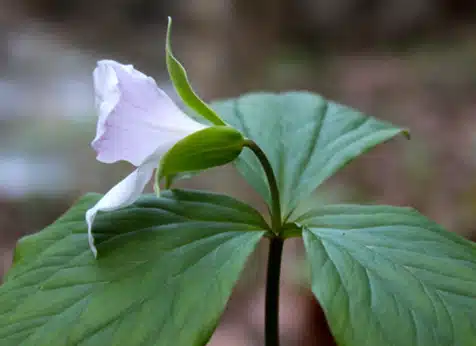
When you visit the Holden Arboretum or the Cleveland Botanical Garden, you can’t just spend all your time looking at our flowers. You need to smell them too! Of our many plants, some of them smell pleasant, some awful, and some do not smell at all. In between sniffs, if you are like me, you might have stopped and wondered why plants have unique smells? Read on to find the answer to that question.

Well, why do flowers smell?
Many plants have evolved to produce specific scents even though the production of scent compounds is metabolically costly. Therefore, plants must benefit from the production of these scent compounds, but how?
The Plant Pollinator Relationship
Many plants depend on animals for reproduction. Plants provide food for pollinators in the form of nectar and pollen. These pollinators feed on multiple plants transferring pollen grains between them and enabling them to produce seeds.

Influencing Pollinators
To increase the chances of successful reproduction, many plants have evolved to make flowers that attract pollinators. They do this by appealing to the pollinator’s senses. Visual cues make it easier for pollinators to find flowers containing nectar and pollen. However, thousands of plant species produce scents despite the metabolic costs of doing so. This indicates that visual cues alone are not sufficient and that the benefits of producing scent outweigh the cost. Scent is an important strategy used to increase the appeal of flowers. Scent helps to direct pollinators to specific flowers where they are rewarded with nectar and pollen. The scent of flowers can attract a variety of pollinators from both long and short distances. Interestingly, plants smell strongest when their flowers are ready for pollination and during the active hours of pollinator species. Next time you stop to smell a flower, pause and think about how the co-evolution of animals and plants lead to the pleasant smell you are experiencing.
Works Cited:
Dudareva, Natalia. “Why Do Flowers Have Scents?” Scientific American, Scientific American, 18 Apr. 2005, https://www.scientificamerican.com/article/why-do-flowers-have-scent/.
Wright, Geraldine A., and Florian P. Schiestl. “The Evolution of Floral Scent: The Influence of Olfactory Learning by Insect Pollinators on the Honest Signalling of Floral Rewards.” Functional Ecology, vol. 23, no. 5, 2009, pp. 841–851., https://doi.org/10.1111/j.1365-2435.2009.01627.x.

Nicholas Chilson
Gardener
Nick Chilson holds a degree in Environmental and Plant Biology from Ohio University. He has worked in both Natural Resource Management and Horticulture. He currently is a Gardener in the Holden Arboretum’s Rhododendron Discovery Garden and Helen S. Layer Rhododendron Garden. He began working at Holden Forests and Gardens, March 2022.













